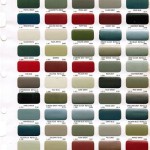```html
Exploring The Many Colors Of Flesh Painting
Flesh painting, or rendering realistic skin tones in art, is a complex and nuanced endeavor. It goes far beyond simply applying a single "flesh-colored" pigment. The human complexion is a tapestry woven from various hues, influenced by genetics, environment, health, and even emotion. Mastering the art of flesh painting requires careful observation, a deep understanding of color theory, and the ability to accurately mix and apply paints to create the illusion of life and depth.
The primary goal of flesh painting is to depict the subtle variations in color that exist on the skin's surface. These variations are caused by a multitude of factors, including the presence of melanin, the visibility of blood vessels, and the underlying structure of muscles and bones. Successful flesh painting captures these nuances, resulting in a believable and compelling representation of the human form.
Understanding the Foundation: Primary Colors and Beyond
Traditional color theory posits red, yellow, and blue as the primary colors, the building blocks from which all other colors can be derived. While this is a useful starting point, flesh painting demands a more sophisticated palette. The specific shades of red, yellow, and blue chosen will significantly impact the final result. For instance, a cadmium red will produce warmer, more vibrant mixes than a alizarin crimson, which leans towards a cooler, more transparent tone. Similarly, a cadmium yellow light will offer brighter highlights compared to a yellow ochre, which introduces earthiness and warmth.
Expanding beyond the primary triad is essential. White, usually titanium white or zinc white depending on opacity preferences, is indispensable for lightening colors and creating highlights. Earth tones such as burnt sienna, raw umber, and yellow ochre are invaluable for grounding the flesh tones and adding depth. These colors mimic the natural pigments found in skin and help to create shadows and transitions that feel believable.
Green and violet, often overlooked in introductory color theory, play a crucial role in flesh painting. Green can be used to neutralize redness, particularly in areas where shadows are cast. Violet, being opposite yellow on the color wheel, can be used to create subtle shifts in skin tone, especially in areas where the skin is thinner and blood vessels are more visible, such as around the eyes and temples.
The key to successful color mixing for flesh painting lies in understanding the characteristics of each pigment. Some pigments are transparent, allowing light to pass through them and create luminous effects. Others are opaque, providing solid coverage and blocking light. Knowing which pigments are transparent and which are opaque allows the artist to layer colors effectively, building up depth and complexity in the skin tones.
The Importance of Value and Light
Value refers to the lightness or darkness of a color. It is arguably more important than hue when rendering form. Accurate value relationships are what define the shape and volume of the figure. Without a strong understanding of value, even the most perfectly mixed colors will fail to create a convincing representation of skin.
To accurately depict value, artists often create a value scale, ranging from pure white to pure black, with several gradations in between. By comparing the values in the reference image or the live model to the value scale, the artist can determine the appropriate lightness or darkness of each area of the skin. Using a limited palette of blacks and whites can also be an exercise in understanding value before introducing colors.
Light plays a crucial role in how we perceive color and value. The direction, intensity, and color of the light source will all affect the appearance of the skin. For example, warm light will cast warm shadows and highlight the warm tones in the skin, while cool light will cast cool shadows and accentuate the cool tones. It's important to carefully observe the lighting conditions and adjust the colors and values accordingly.
Highlights are the lightest areas of the skin, where the light is reflecting most directly. Shadows are the darkest areas, where the light is blocked. Midtones are the areas in between, which represent the average value of the skin. The placement of highlights and shadows is critical for creating the illusion of three-dimensionality. Accurately rendering the transitions between light and shadow will define the form of the figure.
Techniques for Applying Paint
The method of applying paint significantly impacts the final appearance of flesh tones. Several techniques, often used in combination, can achieve realistic and aesthetically pleasing results.
One common technique is layering, which involves applying thin, transparent washes of color over one another. This allows the artist to build up depth and complexity in the skin tones gradually. Layering is particularly effective for creating subtle transitions between light and shadow and for achieving a luminous effect. Glazing is a similar layering technique involving translucent washes of colors over dried underlayers. This method enhances the luminosity of the colors beneath, enriching the overall depth.
Another technique is scumbling, which involves applying paint in a broken, textured manner. This creates a sense of vibrancy and adds visual interest to the skin. Scumbling is often used to create the appearance of texture, such as the fine hairs that are visible on the skin's surface. Dry brushing is similar to scumbling, using a dry brush with minimal paint to create a textured effect, especially useful for highlighting.
Blending is a technique for smoothly transitioning between different colors and values. This can be achieved by using a soft brush or a blending tool to gently blur the edges of the paint. Blending is particularly important for creating seamless transitions between light and shadow. However, over-blending can lead to a loss of detail and a flat, lifeless appearance. Therefore the artist must find a balance between smoothing and preserving the integrity of each color application.
Impasto is a technique involving thickly applying paint to the surface, creating a textured, three-dimensional effect. This technique can be used to accentuate highlights and create a sense of dynamism. While impasto isn't typically used across the entire canvas when painting flesh, strategic use can add life to certain areas like highlights on the nose or cheekbones. Each of these techniques is a tool, and like any tool, its effectiveness depends on the artist's skill and understanding of its properties.
Ultimately, mastering flesh painting requires practice and experimentation. By understanding the principles of color theory, value, and light, and by experimenting with different painting techniques, artists can develop their own unique approach to capturing the beauty and complexity of the human form.
```
Wax And The Color Of Flesh

Zorn Palette Exploration Watercolor Mixing Art Lessons

Creative Diversity Exploration Activities For Kids Multicultural

Floquil Rr23 Flesh Precisely Matched For Paint

Touched By An Eagle Digital Insider

Finding Color Harmony With Baxter Kirby Portrait Society Of Atlanta

Myperfectcolor Match Of Wake Forest University Demon Deacons Deacon Flesh Precisely Matched For Paint And Spray

The Colors Of Us Exploring All Browns World Color Race Skin

Exploring The Soul Through Art S Series

Exploring Color Palettes Mixing Paint Colors Skin Palette Oil Painting Techniques
Related Posts








